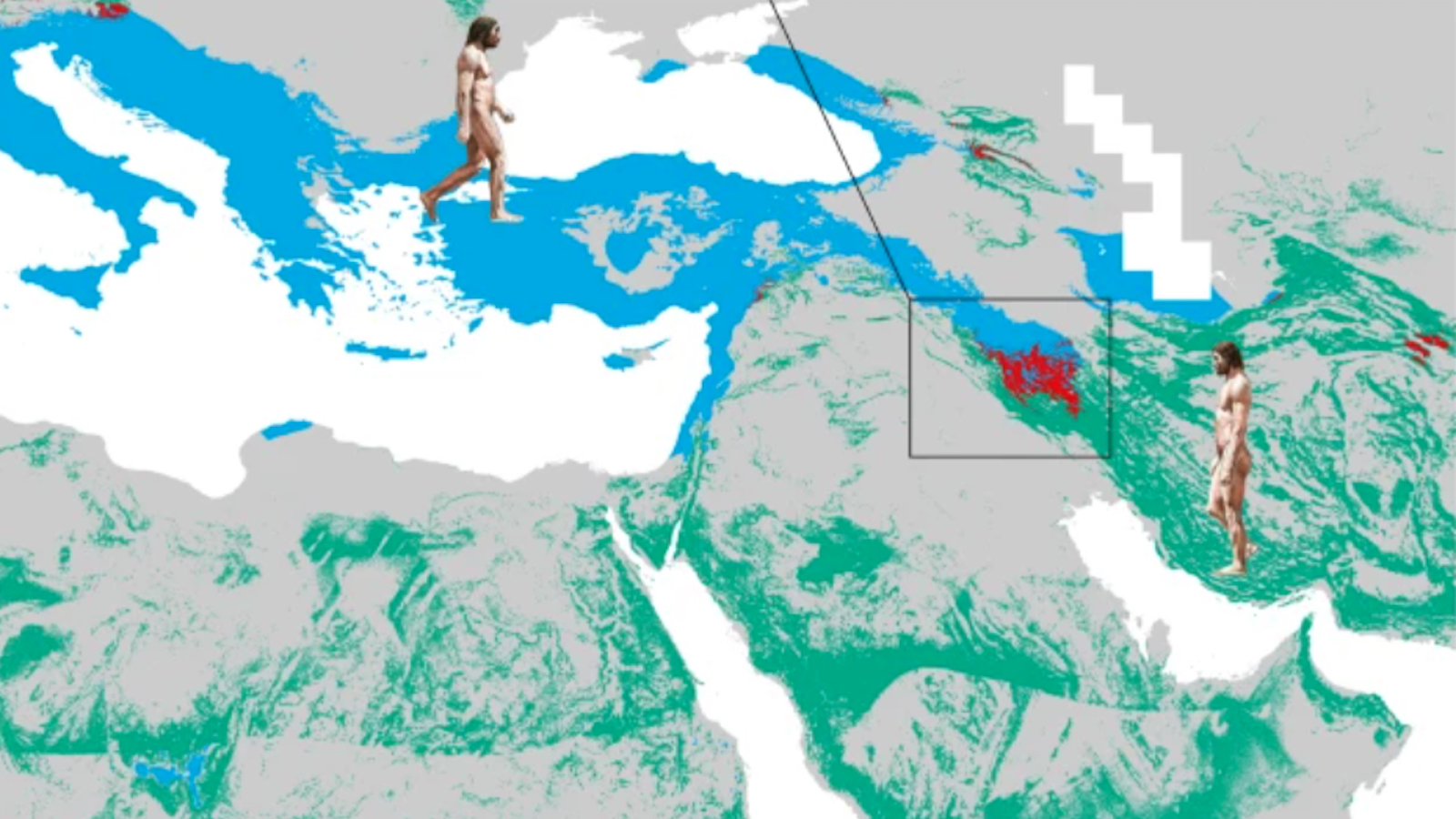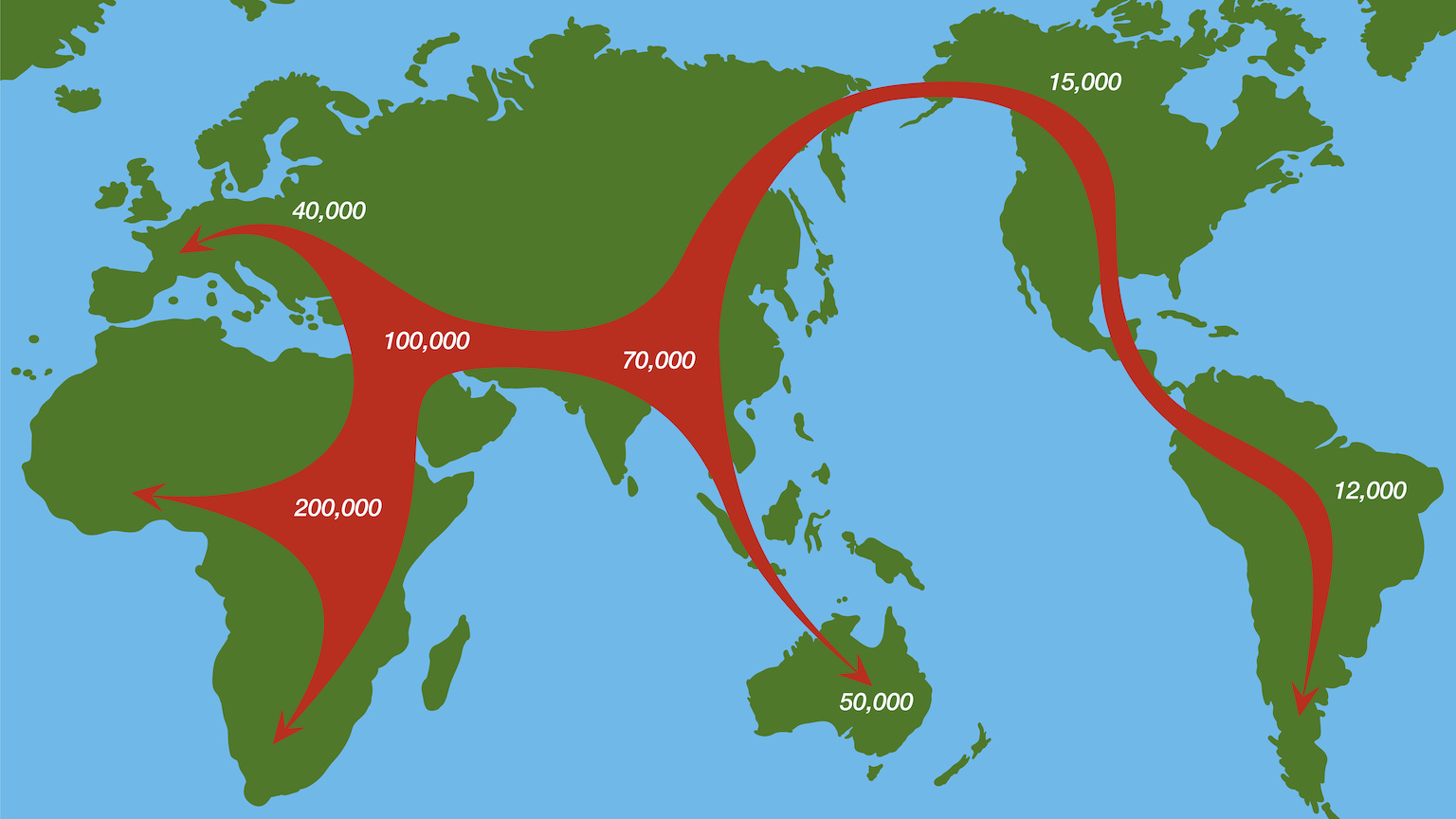Geneticists Find Most Early Humans Left Africa in a Single Migration

It’s long been understood that modern humans can trace their origin to Africa, from where we eventually made our way northward and out to other corners of the world. It’s reasonable to assume this to be a gradual process. Now, however, three separate genetic studies have come to a different conclusion: Just one migration from Africa brought the majority of our ancestors out into the rest of the world, and it happened between 50,000 and 75,000 years ago.
The findings of the three studies were published earlier this week in Nature. They’re all based on studying the DNA in present-day humans. Each of the three studies comes to its own conclusions on timing, but taken together, they pretty much agree.
There is evidence of modern humans in Asia by 80,000 years ago — with DNA from one Neandertal human bone dated to 110,000 years back — but these people died out and aren’t part of the modern genome. There are also remnants of smaller, earlier migrations among indigenous Australians, New Guineans and Andamanese, but they don’t occur often in modern genome samples.
The Simons Genome Diversity Project Study
The Simons Genome Diversity Project looked at high-quality genomes of 300 subjects from 200 different populations, an exceptionally broad range of samples — they identified more than 5.8 million base pairs that aren’t in the standard human genome reference. The researchers put the mass migration of most modern humans from Africa at around 50,000 years ago. The study concludes that they moved into the Middle East, where they interbred with Neandertals, before splitting into two groups. One group headed north to Europe, and the other east to Asia.
The study did find evidence of a smaller exodus about 100,000 years ago, but concluded that DNA these people shows up in a just a few modern humans.
Estonian Biocentre Human Genome Diversity Panel Study
The Estonian Biocentre Human Genome Diversity Panel examined 483 genomes from 148 populations, uncovering 379 new genomes from 125 populations. While they found about 2% of the genome of present residents of Papua, New Guinea comes from humans who arrived as early as 120,000 years ago, the people migrating from Africa about 75,000 years back completely overwhelmed this small contingent.
Study of Pacific Aboriginal People
The third study looked at genomes from 83 Aboriginal Australians and 25 Papuans from the New Guinean highlands. These populations have been thought in the past to derive from much earlier migrations, but the study found otherwise. It concluded that their subjects’ ancestors all migrated from Africa about 72,000 years ago, finding, as did the first study, that they settled first in the Middle East before splintering into groups, with one arriving in the Pacific region about 50,000 years ago.
On the Other Hand, Climate
There is another study, though, about climate, that casts the genetic studies’ timeframe in doubt.
In this study, researchers examined climate and sea-level changes over the last 125,000 years. They hypothesize that migrations occurred during periods when humans where drawn outward into fertile new areas by vegetation. If this is the case, there were just a few likely windows: from 107,000-95,000 years ago, from 90,000-75,000 years ago, and not again until 59,000 years ago. The genetic migration suggested by the genetic studies would have occurred at exactly the wrong time, when northern Africa was arid, empty, and hardly inviting.
On the other hand, one possible answer to this conflict might be that humans had been drawn to northern Africa during a lush period, and then moved outward when conditions turned unfavorable.
This disconnect will have to be examined further in future studies.





